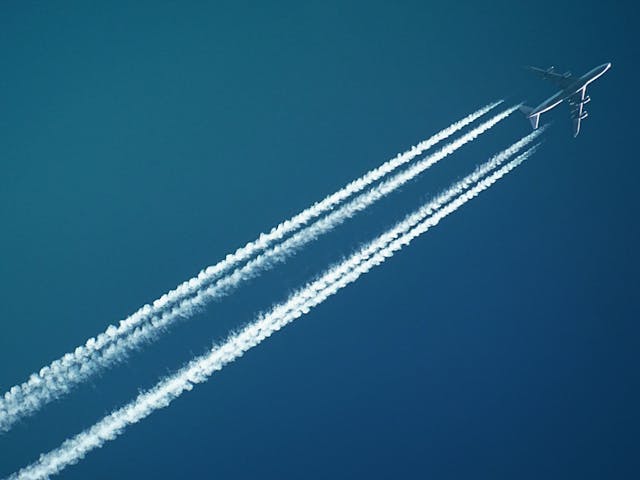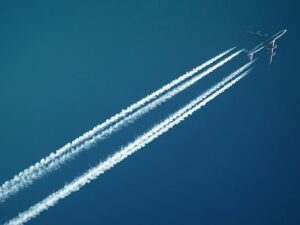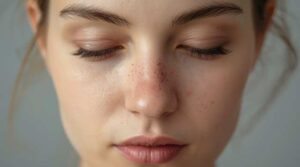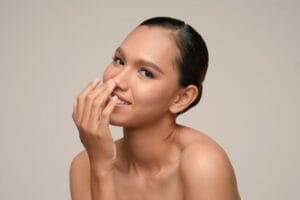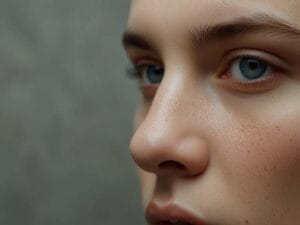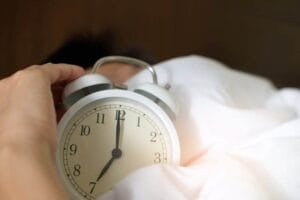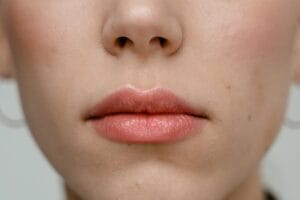Things to Avoid After Rhinoplasty: Your Complete Recovery Guide
You’ve just had rhinoplasty surgery, and now comes the real work—the recovery period. Here’s what many patients don’t realize: the weeks following your procedure are just as critical as the surgery itself. What you do—or don’t do—during this time can make the difference between a smooth healing process and Things to avoid after rhinoplasty that could affect your final results.
What should you avoid after rhinoplasty?
Answer :After rhinoplasty, avoid strenuous exercise, blowing your nose, wearing glasses, smoking, alcohol, sun exposure, swimming, and touching your nose for at least 2-4 weeks. Sleep with your head elevated, avoid blood-thinning medications, and follow your surgeon’s specific timeline. These restrictions support optimal healing and prevent complications.
The thing is, every surgeon provides post-operative instructions, but they’re often delivered during a time when you’re still processing everything. That’s why understanding what to avoid after rhinoplasty matters so much. It’s not just about following rules; it’s about giving your body the best possible environment to heal.
This guide covers the essential things to avoid after rhinoplasty, but it goes deeper than most lists you’ll find. We’ll explain why each restriction exists, what happens if you don’t follow it, and when you might be able to ease back into normal activities. Because recovery isn’t one-size-fits-all, and understanding the reasoning behind these guidelines helps you make better decisions.
Why Post-Rhinoplasty Restrictions Matter
Before diving into specific things to avoid after rhinoplasty, let’s talk about why these restrictions exist in the first place. Your nose has just undergone significant structural changes. The cartilage and bone have been reshaped, tissues have been repositioned, and healing is happening at a cellular level.
During the first few weeks, your body is working to stabilize the new nasal structure. Blood vessels are regrowing, swelling is resolving, and scar tissue is forming in the right places. Any disruption to this delicate process can lead to complications ranging from increased swelling to structural issues that might require revision surgery.
That’s why the things to avoid after rhinoplasty aren’t arbitrary rules—they’re based on decades of clinical experience showing what supports optimal healing versus what increases risk. Your surgeon’s recommendations are tailored to help you achieve the best possible outcome.
Physical Activities and Exercise Restrictions
One of the most common questions patients ask is about returning to physical activities. The answer depends on what kind of activity we’re talking about, and understanding the nuances here can save you from setbacks.
Things to Avoid After Rhinoplasty: Strenuous Exercise and Heavy Lifting
For the first two weeks, you’ll need to avoid anything that increases your heart rate significantly or puts strain on your body. That means no running, weightlifting, intense cardio, or high-impact workouts. Here’s why: when you exert yourself, your blood pressure rises, and increased blood flow to your face can cause swelling, bleeding, or even disrupt the healing tissues.
The same goes for heavy lifting—anything over 10-15 pounds should wait. This isn’t just about your nose; heavy lifting increases intra-abdominal pressure, which can affect blood flow throughout your body and potentially impact healing.
After two weeks, light activities like gentle walking are usually fine, but you’ll want to clear anything more intense with your surgeon. Most patients can return to moderate exercise around four to six weeks, but contact sports or activities where facial impact is possible should wait at least three months.
Contact Sports and High-Risk Activities
This one should be obvious, but it’s worth emphasizing: any activity where your face might get hit needs to wait. That includes boxing, martial arts, basketball, soccer, and similar sports. Even seemingly safe activities like yoga can be risky if they involve inversions or positions that increase blood flow to your head.
The nasal bones need time to fully heal and stabilize. An impact too early can shift the newly positioned structures, potentially requiring revision surgery. Most surgeons recommend waiting at least three to six months before returning to contact sports, and some suggest even longer depending on your specific procedure.
Nasal Care and Hygiene Restrictions
How you handle your nose during recovery is crucial. The surgical site is vulnerable, and certain actions can disrupt healing or introduce infection.
Things to Avoid After Rhinoplasty: Blowing Your Nose
This is one of the hardest restrictions for patients—especially during allergy season or when you’re congested. But here’s why it matters: blowing your nose creates pressure that can disrupt the delicate healing tissues inside your nasal passages. It can also cause bleeding, dislodge internal splints or packing, and potentially affect the final shape of your nose.
Most surgeons recommend avoiding nose-blowing for at least two weeks, sometimes longer. If you’re congested, saline sprays or gentle rinses (with your surgeon’s approval) can help. Sneezing? That’s harder to control, but if you feel one coming, try to keep your mouth open to reduce pressure in your nasal passages.
Touching or Manipulating Your Nose
Your hands carry bacteria, and touching your nose introduces germs to healing tissues. Beyond infection risk, any pressure on the nose during early healing can affect the final shape. That indentation you create by pressing too hard? It might not resolve.
This also means being extra careful with daily activities—pulling shirts over your head, washing your face, sleeping positions. It’s easy to forget and bump your nose, but awareness is key. Some patients find it helpful to set reminders or place notes around their home during the first few weeks.
Medications and Supplements to Avoid
Not all medications are created equal when it comes to healing after rhinoplasty. Some can interfere with blood clotting, increase bleeding risk, or interact poorly with your prescribed medications.
Things to Avoid After Rhinoplasty: Blood-Thinning Medications
Aspirin, ibuprofen, and other NSAIDs should be avoided unless your surgeon specifically approves them. These medications increase bleeding risk, which can lead to complications like hematomas or excessive swelling. The same goes for supplements like ginkgo biloba, vitamin E (in high doses), fish oil, and garlic supplements.
If you take blood thinners for a medical condition, your surgeon needs to know well in advance. They’ll work with your prescribing doctor to manage this safely, but don’t assume you can just stop taking them without medical supervision.
Things to Avoid After Rhinoplasty: Certain Herbal Supplements
This is where things get tricky because many people don’t think of supplements as medications. But herbs like St. John’s Wort, ginseng, and others can affect bleeding, interact with anesthesia medications, or interfere with healing. Always disclose all supplements you’re taking—even if they seem harmless.
Your surgeon will provide a comprehensive list, but when in doubt, ask. It’s better to pause a supplement temporarily than risk complications.
Lifestyle Factors That Impact Healing
Your daily habits play a bigger role in recovery than most people realize. Some lifestyle choices can significantly slow healing or increase complication risk.
Things to Avoid After Rhinoplasty: Smoking and Nicotine Products
This is non-negotiable. Smoking constricts blood vessels, reducing blood flow to healing tissues. It also introduces carbon monoxide, which impairs oxygen delivery—exactly what your healing nose needs. The result? Slower healing, increased infection risk, and potentially poor scarring.
The recommendation is to stop smoking at least two weeks before surgery and avoid it for at least three weeks after, though many surgeons prefer longer—even permanently. This includes vaping, nicotine patches, and other nicotine products. If you’re a smoker, be honest with your surgeon about this. They can help you develop a plan to quit safely.
Things to Avoid After Rhinoplasty: Alcohol Consumption
Alcohol dilates blood vessels, which can increase swelling and bleeding risk. It also dehydrates your body, interferes with sleep quality (which is crucial for healing), and can interact poorly with pain medications. Most surgeons recommend avoiding alcohol for at least two to three weeks post-surgery.
There’s also the practical consideration: alcohol impairs judgment, making you more likely to forget restrictions or accidentally bump your nose. Not worth the risk.
Things to Avoid After Rhinoplasty: Sun Exposure
Your nose will be more sensitive to sun exposure after surgery, and UV rays can cause discoloration, increase swelling, and make scars more visible. This is especially important in the first few months when healing is most active.
When you do go outside, wear a wide-brimmed hat and use broad-spectrum sunscreen with SPF 30 or higher. Some patients find this challenging during summer months, but protecting your results is worth the temporary inconvenience. The discoloration that can occur from sun exposure might take months to fade, if it fades at all.
Things to Avoid After Rhinoplasty: Wearing Glasses and Eyewear
If you wear glasses, you’ll need a plan for the recovery period. Glasses resting on the bridge of your nose can create pressure points that affect healing, potentially causing indentations or shifting the nasal structure.
Most surgeons recommend avoiding glasses for at least four to six weeks, sometimes longer. Contact lenses are usually fine after the first week or two, but check with your surgeon. If you absolutely need to wear glasses, some surgeons can provide a splint or device that distributes weight across your forehead instead of your nose.
For sunglasses, the same rules apply—they might seem lighter, but they still create pressure. Consider a hat with a brim for sun protection instead.
Things to Avoid After Rhinoplasty: Swimming and Water Activities
Water might seem harmless, but it introduces several risks. Chlorine in pools can irritate healing tissues. Bacteria in lakes, rivers, or oceans can cause infection. And the pressure changes from diving or swimming underwater can affect healing structures.
Most surgeons recommend avoiding swimming for at least three to six weeks, sometimes longer depending on your healing progress. This includes pools, hot tubs, lakes, and oceans. Even gentle wading can be risky if water gets into your nose.
Showers are usually fine, but avoid directing water stream directly at your face during the first week or two. And skip hot tubs and saunas entirely during early recovery—heat can increase swelling and bleeding risk.
Things to Avoid After Rhinoplasty: Makeup and Skincare Products
The skin around your nose is healing, and introducing makeup or harsh skincare products can cause irritation, infection, or interfere with healing. Most surgeons recommend waiting at least one to two weeks before applying makeup, and even then, you’ll want to be gentle and avoid the surgical area.
When you do resume makeup, use clean brushes and avoid sharing products. Mineral makeup is often better tolerated than heavy foundations. And skip anything with active ingredients like retinoids, acids, or exfoliants near the surgical site until your surgeon clears it.
Things to Avoid After Rhinoplasty: Sleep Position and Elevation
This might seem minor, but it’s actually one of the most important things to avoid after rhinoplasty: sleeping flat. When you lie flat, gravity causes fluid to accumulate in your face, increasing swelling. Elevating your head helps drainage and reduces pressure.
Most surgeons recommend sleeping with your head elevated at a 30-45 degree angle for at least the first week, sometimes two. This might mean extra pillows, a wedge pillow, or even sleeping in a recliner. It’s not the most comfortable, but it significantly impacts swelling reduction.
Also, try to sleep on your back rather than your side or stomach. Rolling onto your face can put pressure on your nose and disrupt healing.
Things to Avoid After Rhinoplasty: Dietary Considerations
While most dietary restrictions are minimal, there are a few things worth noting. Very hard or chewy foods might be uncomfortable given facial swelling, and excessive sodium can increase swelling. But the bigger picture is supporting your body’s healing process.
Focus on a balanced diet with adequate protein (essential for tissue repair), vitamins C and A (important for collagen formation), and zinc (supports immune function). Stay hydrated—proper hydration supports healing and helps reduce swelling.
Some patients find that very spicy foods increase nasal congestion, which can be uncomfortable. But this varies person to person. The key is listening to your body and avoiding anything that seems to increase discomfort or swelling.
Things to Avoid After Rhinoplasty: When Restrictions Can Be Lifted
Here’s what many articles don’t cover: the timeline isn’t rigid. Your surgeon will give you specific guidance based on your healing progress, the complexity of your procedure, and your individual factors.
Typically, you’ll have follow-up appointments at one week, two weeks, one month, three months, and six months. At each visit, your surgeon assesses your healing and can adjust restrictions. Some patients heal faster than others, and some restrictions can be eased earlier while others might need to last longer.
The key is following your surgeon’s specific recommendations rather than generic timelines. What works for one patient might not be right for another. And when in doubt? Ask. Your surgeon’s team is there to guide you through this process.
Things to Avoid After Rhinoplasty: Common Misconceptions About Recovery
There are plenty of myths floating around about rhinoplasty recovery. Let’s address a few:
Myth: “I can return to normal activities after the splint comes off.”
Reality: The external splint removal is just one milestone. Internal healing continues for weeks, and many restrictions remain.
Myth: “A little bit of exercise won’t hurt.”
Reality: Even moderate exercise too early can cause complications. It’s better to wait and heal properly than rush back.
Myth: “I’ll be back to normal in two weeks.”
Reality: While most swelling resolves in weeks, subtle changes continue for months, even up to a year. Full healing takes time.
Myth: “I can hide my recovery restrictions.”
Reality: Your body will tell you if you’re doing too much through increased swelling, pain, or complications. Listen to it.
Things to Avoid After Rhinoplasty: What Happens If You Don’t Follow Restrictions
This is the question patients sometimes hesitate to ask, but it’s important to understand. Not following things to avoid after rhinoplasty can lead to:
- Increased swelling that takes longer to resolve
- Bleeding complications requiring emergency care
- Infection that might need antibiotics or additional procedures
- Structural issues requiring revision surgery
- Poor scarring or visible scars
- Delayed healing extending your recovery time
The severity depends on what restriction was violated and how early in recovery it happened. But here’s the thing: most complications are preventable by following guidelines. It’s not worth the risk.
Working With Your Surgeon’s Team
Your surgeon and their team are your best resource during recovery. They’ve seen thousands of patients go through this process, and they know what works. Don’t hesitate to call with questions, even if they seem minor.
Keep a list of questions as they come up. Take photos if you’re concerned about something (many practices offer virtual check-ins). And attend all follow-up appointments—these visits aren’t optional; they’re part of ensuring optimal healing.
If something doesn’t feel right, don’t wait. Early intervention can prevent bigger problems. Trust your instincts and reach out to your surgical team.
Things to Avoid After Rhinoplasty: Planning Ahead for Recovery
The best recovery starts before surgery. Stock up on supplies you’ll need: saline spray, extra pillows, comfortable clothing that doesn’t go over your head, easy-to-prepare meals, entertainment for rest days. Set up your recovery space with everything within reach.
Arrange help if needed—driving restrictions, lifting limitations, and general fatigue mean you might need support for the first week or two. Plan your schedule to allow for proper rest. Many patients try to return to work or activities too quickly, and that can set back healing.
Think about what you’ll need to avoid and plan alternatives. If you’re a glasses wearer, get contacts or plan for the bridge support. If you exercise regularly, line up low-impact alternatives. The more you prepare, the easier it is to follow restrictions.
The Bigger Picture: Patience and Perspective
Recovery from rhinoplasty isn’t just about following a list of restrictions. It’s about giving your body the time and environment it needs to heal properly. The things to avoid after rhinoplasty might seem restrictive, but they’re temporary—usually just a few weeks to a few months in the context of a lifetime of enjoying your results.
Most patients find that once they understand the “why” behind each restriction, following them becomes easier. It’s not about arbitrary rules; it’s about supporting your body’s natural healing process.
Remember, healing isn’t linear. Some days you’ll feel great, and others you might notice more swelling or discomfort. That’s normal. The restrictions are there to minimize complications and support optimal healing, but they don’t eliminate all variability in the recovery process.
Your surgeon chose these guidelines based on decades of research and clinical experience. They’re designed to give you the best possible outcome. Trust the process, follow the guidelines, and be patient with your body as it heals.



